External Advisory Board
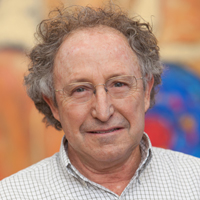 |
Mark H. EllismanUniversity of California, San Diego Professor of Neurosciences and Bioengineering, Dr. Ellisman is also an expert in the development and application of network and information technologies to advance the biological sciences. His research furthers investigations into the basic molecular and cellular mechanisms of the nervous system and enables the development of advanced technologies in microscopy and computational biology. He is a pioneer in the development of three-dimensional, light and electron microscopy and in the application of advanced imaging technologies and computational resources to achieve greater understanding of cellular structure and function, particularly as applied to the nervous system. Ellisman's telemicroscopy research initiative was instrumental in the evolution of cyberinfrastructure, i.e., the use of advanced networks to connect computational, data storage, visualization, and software tools with rare research assets to address global research priorities. He recently expanded his efforts to build community resources using emerging capabilities in information technology to two new biology initiatives: a project in neuroscience to create an electronic "Whole Brain Catalog;" and a community-serving cyberinfrastructure for microbial metagenomics known as CAMERA (Cyberinfrastructure for Advanced Marine Microbial Ecology Research and Analysis). |
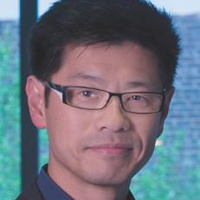 |
James GeeUniversity of Pennsylvania, Philadelphia Dr. Gee is Director of the HHMI-NIBIB (Howard Hughes Medical Institute National Institutes of Biomedical Imaging and Bioengineering) Interfaces Program in Biomedical Imaging and Informational Sciences, and Co-Director of the Translational Biomedical Imaging Center of the Institute for Translational Medicine and Therapeutics, all at the University of Pennsylvania, Philadelphia. Dr. Gee is an Associate Professor of Radiologic Science and Computer and Information Science. Dr. Gee's group, the Penn Image Computing and Science Laboratory (PICSL), is widely recognized for its basic and applied research in mathematical, computational and statistical methods for extracting, analyzing and integrating information from imaging and ancillary data. Of particular interest to the group are methods for detecting, quantifying and modeling the ways in which anatomy and physiology can vary in nature, over time, or as a consequence of disease or therapy. A major goal of this research is its translation into practical tools, made freely and publicly available through the group's open-source ITK-SNAP, ANTs, DTI-TK and ITK software, which have consistently ranked as among the best performing and most widely used applications in segmentation, registration, diffusion tensor imaging analysis, and morphometry. The group's portfolio of interdisciplinary collaborations spans different model systems and the major modalities in biological and medical imaging, in integrative studies of structure-function relationships of the brain, lung, heart and musculoskeletal system in health and disease. |
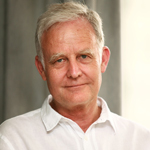 |
Peter HunterAuckland Bioengineering Institute Peter Hunter completed his Engineering and Masters of Engineering degrees at The University of Auckland before undertaking his DPhil (PhD) in Physiology at the University of Oxford where he researched finite element modeling of ventricular mechanics.Since then his major research interests have been around modelling various aspects of the human body using specially developed computational algorithms and an anatomically and biophysically based approach which incorporates the detailed anatomical and microstructural measurements and material properties into the continuum models. Peter has received numerous accolades for his work and in 2010 was appointed to the NZ Order of Merit. In 2009, he was awarded the Rutherford Medal, New Zealand's top science award, as well as the KEA World Class NZ award in Research, Science, Technology and Academia. As Co-Chair of the Physiome Committee of the International Union of Physiological Sciences Peter is helping to lead the world in the use of computational methods for understanding the integrated physiological function of the body in terms of the structure and function of tissues, cells and proteins. Alongside his role as Director of the Auckland Bioengineering Institute and Professor of Engineering Science at The University of Auckland, Peter is also Director of Computational Physiology at Oxford University and he holds honorary or visiting Professorships at a number of universities around the world. Peter is also on the scientific advisory boards of a number of research institutes in Europe, the US and the Asia-Pacific region. |
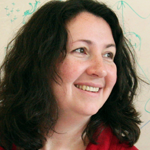 |
Polina Golland(CSAIL) MITPolina is a professor in the EECS Department and an associate director of the Computer Science and Artificial Intelligence Laboratory (CSAIL) at MIT. Her primary research interest is in developing novel techniques for biomedical image analysis and understanding. She particularly enjoys working on algorithms that either explore the geometry of the world and the imaging process in a new way or improve image-based inference through statistical modeling of the image data. She is interested in shape modeling and representation, predictive modeling and visualization of statistical models. Her current research focuses on developing statistical analysis methods for characterization of biological processes based on image information. In this domain, she is interested in modeling biological shape and function, how they relate to each other and vary across individuals. |
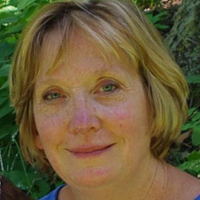 |
Gwen JacobsHawaii UniversityDr. Jacobs was on the faculty at UC Berkeley for 15 years prior to taking her position at Montana State University where she was a Professor of Neuroscience and Interim Director of Research Computing. She is now the Director of Cyberinfrastructure for the University of Hawaii System, where she is leading the Advanced Cyberinfrastructure – Research and Educational Facilitation: Campus-Based Computational Research Support. Dr. Jacobs maintains an active research program focused on informatics and cyberinfrastructure. Recently, she led the Lariat Networking project, an effort to upgrade the physical network infrastructure in 6 rural state institutions, thereby improving the research competitiveness and collaborative activities of scientists at those institutions. Her current research efforts are developing tools and approaches for data management and informatics including the Yogo Data Management Framework and the Virtual Observatory and Ecological Informatics System (VOEIS). At the national level, she has been engaged in science policy for many years serving on the NSF Biological Sciences Advisory Committee, the NIH National Advisory Research Resources Council, NSF TeraGrid Science Advisory Board, as chair of NIH NOIT Study Section and for iPlant and Internet 2. Currently she chairs the Science Advisory Board of the National Centers for Biomedical Computing and serves on the Advisory Board of the National Center for Microscopy and Imaging Research at UCSD. |
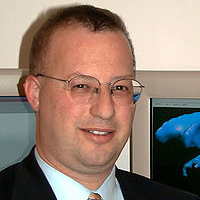 |
Ron KikinisHarvard University Dr. Kikinis is the founding Director of the Surgical Planning Laboratory, Department of Radiology, Brigham and Women's Hospital, Harvard Medical School, Boston, MA, and a Professor of Radiology at Harvard Medical School. This laboratory was founded in 1990. He is the 2009 recipient of the MICCAI Society "Enduring Impact Award". In 2010 he was appointed the Robert Greenes Distinguished Director of Biomedical Informatics in the Department of Radiology at Brigham and Women's Hospital. Dr. Kikinis is the Principal Investigator of the National Alliance for Medical Image Computing (NA-MIC, a National Center for Biomedical Computing, an effort which is part of the NIH Roadmap Initiative), and of the Neuroimage Analysis Center (NAC, a Biomedical Technology Resource Center funded by NIBIB). He is also the Research Director of the National Center for Image Guided Therapy (NCIGT), which is jointly sponsored by NIBIB and NCI and co-Director of the IGT program at CIMIT. He has served and is serving as member of external advisory boards for a variety of centers and research efforts. He is the Principal Investigator of 3D Slicer, a software platform for single subject image analysis and visualization. |
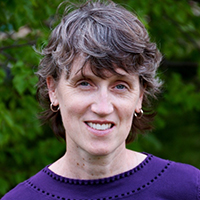 |
Ruth KlepferMedtronic Dr. Klepfer has been working as a scientist at Medtronic in Cardiac Rhythm and Disease Management Research for the past 12 years. In this role she is responsible for study design, protocol development, conduction of studies (both animal and clinical), anddata analysis and interpretation. She also collaborates with physicians in a consulting role and partners with physicians on various studies. Dr. Klepfer's work focuses on potential therapies and diagnostics for people with congestive heart failure. For example, using coupled pacing or high-amplitude stimulation during the absolute refractory period as a means of increasing contractility in people with heart failure. Dr. Klepfer also, with a focus on heart failure, has studiedstimulation of the vagus nerve, pacing strategies for heart failure patients with a preserved ejection fraction, and the use of pulmonary pressure to better manage patients with heart failure. |
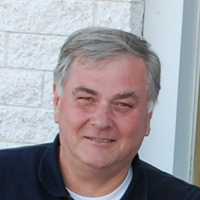 |
Bill LorensenGE Global Research Bill Lorensen retired from GE Research in January 2007. Bill's career at GE started in 1978. He was a Graphics Engineer in the Visualization and Computer Vision Lab at GE Research in Niskayuna, NY. He has 40 years of experience in computer graphics and software engineering. Bill has worked on algorithms for medical image analysis and scientific visualization. He is a co-developer of the marching cubes and dividing cubes surface extraction algorithms. The 1987 Marching Cubes paper is the most cited Siggraph paper. Bill is the author or co-author of over 80 technical articles on topics ranging from finite element pre/postprocessing, 3D medical imaging, computer animation and object-oriented design. He is a co-author of "Object-Oriented Modeling and Design" published by Prentice Hall, 1991. He is also co-author with Will Schroeder and Ken Martin of the book "The Visualization Toolkit: An Object-Oriented Approach to 3D Graphics" published by Kitware in 2004. Bill holds thirty one US Patents on medical and visualization algorithms. In 1991, he was named a GE Coolidge Fellow, the highest scientific honor at GE Research. In 2004, Bill received the first IEEE Visualization Career Award. In 2006, Bill was elected a Fellow of the American Institute of Medical and Biological Engineering. During retirement, Bill remains an active contributor to the open-source toolkits VTK and ITK. He also serves on several NIH, academic and industry advisory boards. |
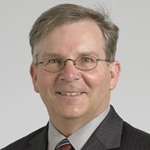 |
John MosherUniversity of Texas In May 2008, after 15 years in basic research at Los Alamos National Laboratory, Dr. Mosher joined the Physician Staff in the Epilepsy Center of the Cleveland Clinic Neurological Institute, to direct research for its new Elekta Neuromag magnetoencephalography (MEG) instrument. Dr. Mosher is currently the Scientific Director of Magnetoencephalography and a Visiting professor within the Dept. of Neurology at the McGovern Medical School, The University of Texas Health Science Center at Houston. |
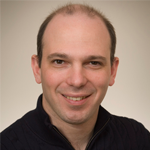 |
Jeffrey OjemannUniversity of Washington Dr. Ojemann is a Professor of Neurological Surgery and holder of the Richard G. Ellenbogen Chair in Pediatric Neurological Surgery. His surgical practice focuses on neurosurgical disorders of childhood and epilepsy surgery in both adults and children. Brain mapping using cortical stimulation is an essential part of his practice. |
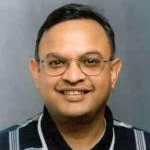 |
Raghu MachirajuOhio StateRaghu Machiraju is on the faculty at The Ohio State University in the Department of Biomedical Informatics and the Department of Computer Science and Engineering. He serves also as the Interim Faculty Lead of Translational Data Analysis – a pan-university effort foster data science in multiple disciplines. His interests include data analysis and visualization especially as they apply to topics in biology, medicine and engineering. Over the years he also been increasingly working on problems of computationally biology and bioinformatics, especially multi-omics and images. |
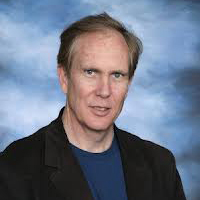 |
Will SchroederKitware Dr. Schroeder is President, CEO and co-founder of Kitware, Inc., where he identifies technology and business opportunities, and obtains the necessary support for Kitware to meet those opportunities. Dr. Schroeder provides technical leadership in large open-source projects such as the National Library of Medicine Insight Toolkit project (ITK), the NA-MIC NIH National Center for Biomedical Computing, and the Visualization Toolkit (VTK), where he is a lead developer, member of the Architecture Review Board, and first author of the Visualization Toolkit textbook. Dr. Schroeder is also an advocate for open source software and business models, and he assistant-teaches an open source course at RPI (with Dr. Luis Ibanez) as part of the Rensselaer Center for Open Source Software. |
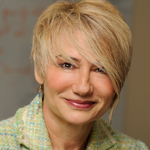 |
Natalia TrayanovaJohns HopkinsThe research in Dr. Trayanova’s Computational Cardiology Lab centers around understanding the normal and pathological electrophysiological and electromechanical behavior of the heart using multi-scale simulation approaches that include biophysically-detailed representations of cellular and subcellular processes and image-based descriptions of the geometry and structure of the heart. Research projects focus on the mechanisms for cardiac arrhythmogenesis and cardiac electromechanical interactions. Importantly, a large number of projects are devoted to the improvement of the clinical therapies of defibrillation, infarct-related ventricular ablation, and cardiac resynchronization therapy using a personalized approach. Research in Dr. Trayanova’s laboratory is supported by grants from NIH, NSF, and the American Heart Association. |
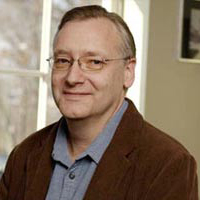 |
Rai WinslowJohns Hopkins Dr. Winslow is a Raj and Neera Singh Professor of the Department of Biomedical Engineering and the Director of the Institute for Computational Medicine and the Center for Cardiovascular Bioinformatics and Modeling at the John Hopkins University School of Medicine & Whiting School of Engineering.Dr. Winslow research interests include Computational modeling of intracellular signaling, metabolism and electrical excitability in cardiac myocytes, Integrative modeling of cardiac function in health and disease, Biomedical data representation and database design and Grid-computing and data-sharing. Dr. Winslow is a speciality editor in chief for Frontiers in Computational Physiology and Medicine and has been in numerous Advisory Committees over the last ten years.
|
